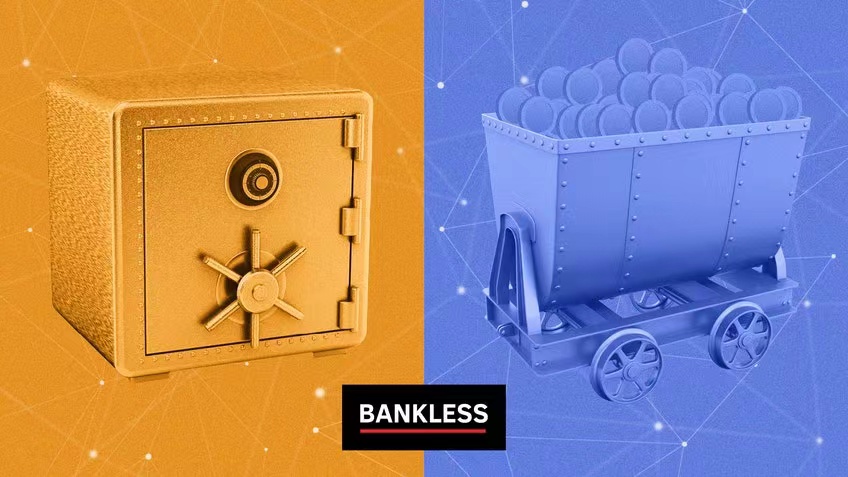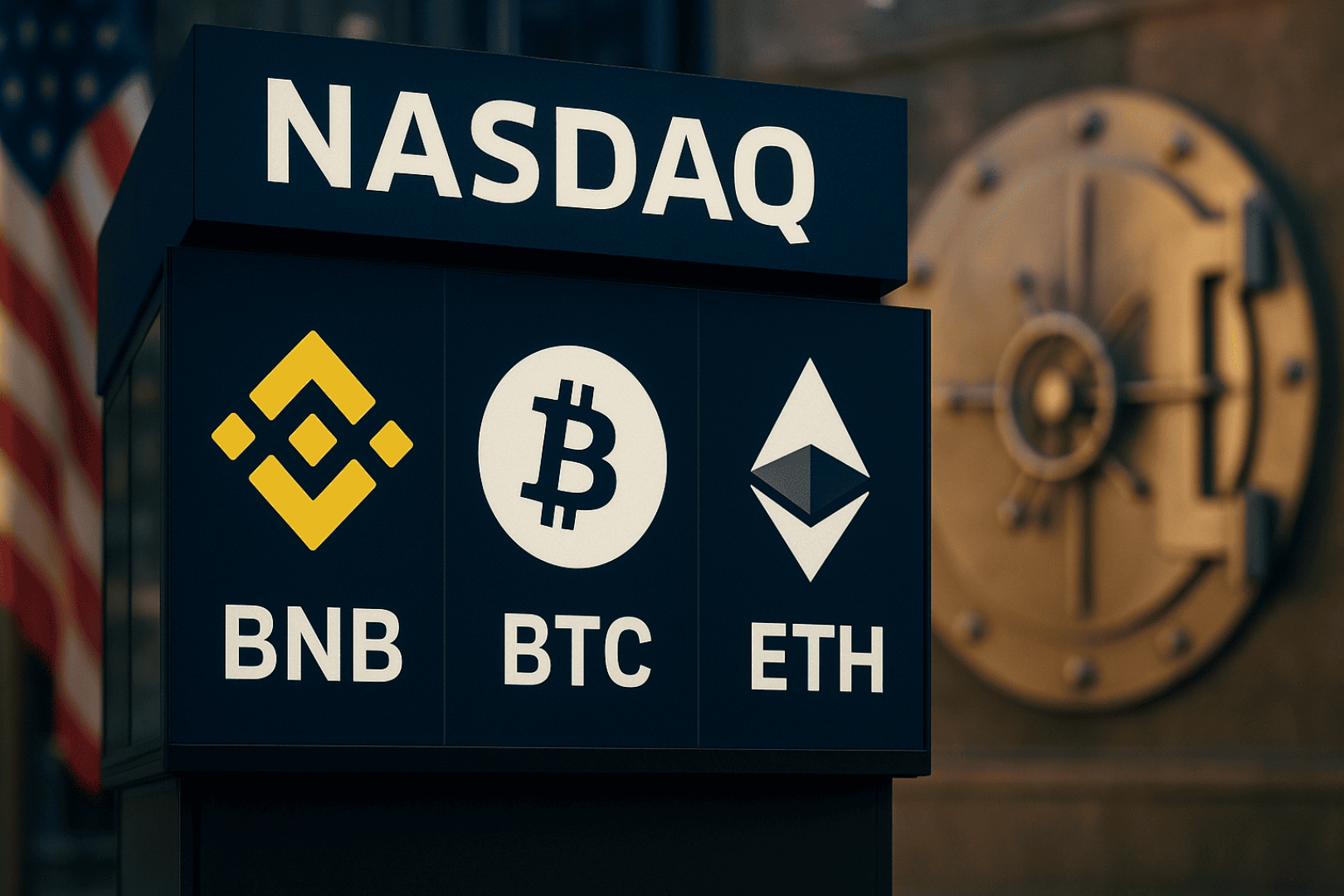This article comes fromBanklessh, Original author: David Hoffman, compiled by Odaily translator Katie Koo.

This article comes from
This summer, the Proof-of-Work (PoW) Ethereum blockchain will be “merged” with the existing Proof-of-Stake (PoS) Beacon chain. This upcoming network upgrade will remove PoW from Ethereum and replace it with the current PoS consensus mechanism guarding the Beacon Chain. This transition to PoS will be the most important in the history of blockchain network upgrades, not only affecting technology, currency, but also (on-chain) economy and society, and involving multiple stakeholder roles. It's also bound to generate misunderstandings, FUD, and criticism.
This article will clarify four common misunderstandings about Ethereum PoS, and explain why the advantages of the PoS consensus mechanism are seriously underestimated.
secondary title1. Which mechanism has a fairer return on capital? Why does this matter?
PoS is often criticized as a system that "makes the rich richer" because PoS is similar to compound interest on financial assets.
"If you have money, you can earn capital faster than poor people can eat dirt."
By making ETH the capital asset that provides network security, PoS programmatically guarantees the same rate of return for all shareholders. In fact, owning more ETH does not yield a higher rate of return. Conversely, in PoW, having more capital does yield a higher return on income.
In the case of a Bitcoin mining farm, separating $1 of capital from $1 worth of Bitcoin hashrate requires additional steps: hardware purchases, hardware wear and tear, electricity consumption, building facilities, mining machine cooling, and so on. Every step that separates $1 of capital from $1 of hashrate is an economy of scale and gives well-capitalized groups an edge over the average individual.
By reducing these extra steps, PoS becomes the fairest consensus mechanism in the public chain.
With PoS, investing $1 million in ETH will earn the same compound rate as investing $1000. This is the competition mode of future science fiction technology (Sci-Fi Tech).
However, there are also some "efficiencies of scale" in PoS. Large validators can afford more frequent transactions, improving long-term yields. As the stake increases, so does the cost of monitoring validators. So having better computer and internet status can be a smart investment.
secondary title
2. What are the types of currencies produced by PoW and PoS? Does the consensus mechanism affect the nature of assets?ETH has both commodity-like and equity-like features. Bitcoin, on the other hand, basically has neither.
Below, we will clarify this point in 5 details.
text
(1) Goods:
The "commodity" produced by the blockchain is block space.
Apple sells iPhones, Google sells advertisements, and blockchain sells blocks. Buying transaction space on the blockchain costs money, and you need to use the currency corresponding to each chain to buy block space. BTC is the only token that can buy Bitcoin block space, and ETH is the only token that can buy Ethereum block space. This will provide a corresponding amount of currency demand for each chain's block space demand.
Just because assets have a monopoly (uniqueness) on block space, the characteristics of block space are injected into the nature of assets.(2) A key difference between Bitcoin and Ethereum:
There is no formal relationship between blockspace and assets, except that Bitcoin blockspace must be purchased with BTC. In contrast,
EIP-1559 converts the demand for Ethereum block space into a demand for Ethereum assets.Buying Bitcoin block space sends BTC to miners, and this BTC is eventually sold on the secondary market (to pay for mining costs). Whereas buying Ethereum block space burns ETH (via EIP-1559), depleting it and removing it from the supply, just like buying a commodity. This allows ETH to embody the commodity value of the Ethereum block space.
Since the primary use of Bitcoin is to hold BTC, the demand for Bitcoin block space is usually not large. Transfers may require block space, but
The value of Bitcoin is not in the transfer of Bitcoins, but in the constant total supply of 21 million units.
EIP-1559;
(3) Rights and interests:
PoW supporters tend to emphasize that it is PoS that gives ETH the rights and interests characteristics. I do think ETH has equity-like properties, but those properties don't come from the consensus mechanism. The price of ETH is officially linked to the value of the Ethereum network through two mechanisms to establish an "equity" relationship:
Collateral requirements for DeFi.(4) Collateral:
ETH is the most original collateral in DeFi. The trust-free nature of ETH meets the needs of DeFi better than any other asset, which makes the growth of the DeFi market size lead to an increase in the value of ETH.
"Decentralized finance" can also be called "trust-free finance". In order to reflect trust-free in the early stages of these financial products, over-collateralization is required.
(5)EIP-1559:
As the number and utility of DeFi applications grows, more ETH is required as collateral. DeFi utility translates into demand for ETH, linking the value of the Ethereum network to the price of ETH on the secondary market. Ultimately, the price of Ethereum is a measure of the value of the goods and services provided by Ethereum, which sounds a lot like equity.Bitcoin does not have the ability to host DeFi applications, nor does it have such a link between the network and assets.
EIP-1559 links the value of economic activity to ETH demand by spending ETH for each transaction.
In contrast, Bitcoin, which is not a commodity, is 21 million units. It does not get the benefit of the growth of the Bitcoin network, so it is not a stake.
secondary title
3. Governance and power differences between PoW and PoS: How does the consensus mechanism affect the governance structure? Does Proof-of-Stake Empower Governance to Stakers?
Don’t confuse Ethereum’s proof-of-stake with on-chain governance.For example, both Tezos and Decred are chains with on-chain token governance, Tezos is PoS, and Decred is a mixture of PoW/PoS. It can be seen that there is no relationship between the consensus mechanism and token governance. "Work" in PoW does not have as much impact on governance as in PoS.
It is not work that removes human governance from cryptoeconomic systems, but cryptography.
Cryptographic systems use cryptography to reduce human management, rather than consensus mechanisms.
Lyn Alden, founder of Investment Strategy, once tweeted:
Work is the only thing that reduces or eliminates governance. PoW systems can be a commodity. PoS itself is a kind of equity. I like equity. But equity is not a commodity.
Investing in massive mining facilities that mine BTC at a discount for the next decade so you can reinvest those profits into additional mining facilities is not a "job".
Due to its resource-intensive nature, PoW has drawn dissatisfaction from local governments (such as Kazakhstan) and other areas with large hash power. Since PoW relies on supply chains, buildings, energy consumption, and other entities, in effect PoW places itself under the current world governance structure that is governing the physical world.
Crypto is to build the future digital world, and materialization is a disadvantage.
secondary title
4. Dealing with 51% attacks: How do PoW and PoS recover from 51% attacks?
Under the PoW mechanism, once someone accumulates 51% of the hash power, there is nothing to stop them from continuously attacking the public chain. They can repeatedly attack the chain with the goal of making it lose its fair accounting function.
In the case of a 51% attack, if honest miners cannot gain additional hash power, then the attacker has full control over the transactions involved.
Looking at PoS again, ETH is a virtual ASIC chip. Virtual ASICs have some important advantages:
(1) ETH lowers the threshold for participants to obtain benefits.
Proponents of PoW claim that this creates structural centralization. Because validators don't change, miners need investments in hardware, facilities, and operating costs to keep running.
Proponents of PoS claim that this empowers retail investors, as only those with privileged knowledge, political connections, and substantial capital maintain market share in computing power. PoS takes all of these challenges and wraps them in the value of ETH, allowing those benefits to be enjoyed by those who can simply hold and stake ETH.
(2) ETH is infinitely movable, decentralized to the greatest extent, and has no entity.
In the real world, the pledged ETH has no entity. This makes PoS networks more resilient to attacks. PoW mining facilities are affected by realistic factors (army, government, floods) and cannot be easily evacuated by themselves.(3) Ethereum has the ability to distinguish between good and evil for ETH.Unlike ASIC chips, ETH is registered on the Ethereum network.
The Ethereum network can identify malicious and honest stakeholders.
In a PoS attack, the attack comes from a specific address holding a specific ETH, which is used to attack the network. Everyone can see the initial source of the staked ETH that could attack Ethereum. Therefore, Ethereum can identify the address on the attacker’s chain and coordinate the “forking” of the attack at a certain block height.
When it comes to PoW, once there is a 51% attack. We must first coordinate with ASIC chip manufacturers and the supply chain to increase the production of ASIC chips as soon as possible, and then ship ASIC chips to benevolent mining facilities that have resource capabilities and do not (will not) attack the network. Therefore, the time required to extinguish the "fire" of a PoW 51% attack is unknown.I think it's easier to coordinate a PoS network at block height than it is to coordinate a global supply chain (shipping new ASIC chips to honest participants).It can also be seen from this extreme example that
Control over the PoW chain comes down to who controls the ASIC chip production and supply chain.
And the ETH "pinned" on the Ethereum network doesn't actually exist on any one particular computer. Validation computers that are staking ETH can be destroyed and the staked ETH can be recovered and redeployed from private keys anywhere in the world.
This is one of the reasons why PoS is more decentralized than PoW. There is no centralization of supply chains, no centralization of economies of scale, and no centralization of large mining facilities.
secondary title
Summary: Don't forget the original intention - decentralization
Some bitcoin enthusiasts claim that bitcoin is the reconstruction of world power, and bitcoin and PoW are the real innovations. I think anyone who makes this point is seriously confusing a key element of blockchain design - decentralization.One of my favorite criticisms of Bitcoin culture is that when the underlying chain doesn't allow L1 innovation, it moves to the social level. PoS has been rigorously studied and demonstrated by people at the forefront of encryption economics, and will be recorded in history as the most democratized power structure in history.



